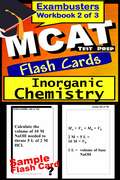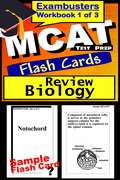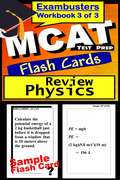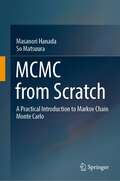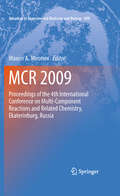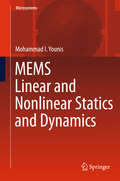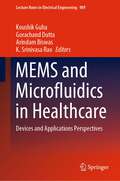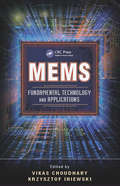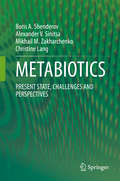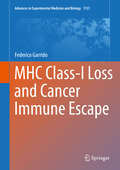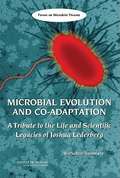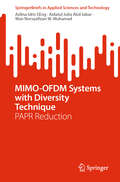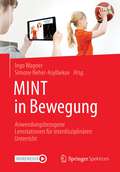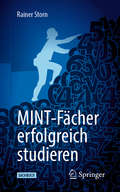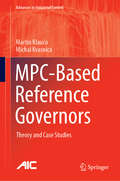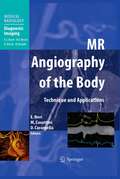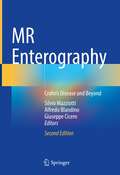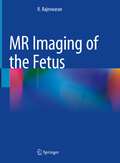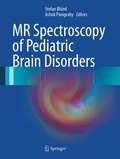- Table View
- List View
MCAT Test Prep Flash Cards: Inorganic Chemistry (Exambusters MCAT Workbook #2 of 3)
by Ace Inc.<P><P><i>Advisory: Bookshare has learned that this book offers only partial accessibility. We have kept it in the collection because it is useful for some of our members. Benetech is actively working on projects to improve accessibility issues such as these.</i><P><P> 700 questions and answers. Essential chemistry formulas and concepts you need. <P><P>Topics: Metric System, Matter, Atoms, Formulas, Moles, Reactions, Elements, Chemical Bonds, Phase Changes, Solutions, Reaction Rates, Acids and Bases, Oxidation and Reduction, Introduction to Organic <P>EXAMBUSTERS MCAT Prep Workbooks provide comprehensive, fundamental MCAT review--one fact at a time--to prepare students to take practice MCAT tests. Each MCAT study guide focuses on one specific subject area covered on the MCAT exam. From 300 to 600 questions and answers, each volume in the MCAT series is a quick and easy, focused read. Reviewing MCAT flash cards is the first step toward more confident MCAT preparation and ultimately, higher MCAT exam scores!
MCAT Test Prep Flash Cards: Review Biology (Exambusters MCAT Workbook #1 of 3)
by Ace Inc.<P><P><i>Advisory: Bookshare has learned that this book offers only partial accessibility. We have kept it in the collection because it is useful for some of our members. Benetech is actively working on projects to improve accessibility issues such as these.</i><P><P> 450 questions and answers. <P><P>Topics: Cells, Biochemistry and Energy, Evolution, Kingdoms: Monera, Fungi, Protista, Plants, Animals; Human: Locomotion, Circulation, Immunology, Respiration, Excretion, Digestion, Nervous System <P>EXAMBUSTERS MCAT Prep Workbooks provide comprehensive, fundamental MCAT review--one fact at a time--to prepare students to take practice MCAT tests. Each MCAT study guide focuses on one specific subject area covered on the MCAT exam. From 300 to 600 questions and answers, each volume in the MCAT series is a quick and easy, focused read. Reviewing MCAT flash cards is the first step toward more confident MCAT preparation and ultimately, higher MCAT exam scores!
MCAT Test Prep Flash Cards: Review Physics (Exambusters MCAT Workbook #3 of 3)
by Ace Inc.<P><P><i>Advisory: Bookshare has learned that this book offers only partial accessibility. We have kept it in the collection because it is useful for some of our members. Benetech is actively working on projects to improve accessibility issues such as these.</i><P><P> 600 questions and answers. Sample problems. <P><P>Topics: Metric System, Motion and Forces, Work and Energy, Fluids, Sound, Light and Optics, Static Electricity, D.C. and A.C. Circuits, Magnetism <P>EXAMBUSTERS MCAT Prep Workbooks provide comprehensive, fundamental MCAT review--one fact at a time--to prepare students to take practice MCAT tests. Each MCAT study guide focuses on one specific subject area covered on the MCAT exam. From 300 to 600 questions and answers, each volume in the MCAT series is a quick and easy, focused read. Reviewing MCAT flash cards is the first step toward more confident MCAT preparation and ultimately, higher MCAT exam scores!
MCMC from Scratch: A Practical Introduction to Markov Chain Monte Carlo
by Masanori Hanada So MatsuuraThis textbook explains the fundamentals of Markov Chain Monte Carlo (MCMC) without assuming advanced knowledge of mathematics and programming. MCMC is a powerful technique that can be used to integrate complicated functions or to handle complicated probability distributions. MCMC is frequently used in diverse fields where statistical methods are important – e.g. Bayesian statistics, quantum physics, machine learning, computer science, computational biology, and mathematical economics. This book aims to equip readers with a sound understanding of MCMC and enable them to write simulation codes by themselves. The content consists of six chapters. Following Chap. 2, which introduces readers to the Monte Carlo algorithm and highlights the advantages of MCMC, Chap. 3 presents the general aspects of MCMC. Chap. 4 illustrates the essence of MCMC through the simple example of the Metropolis algorithm. In turn, Chap. 5 explains the HMC algorithm, Gibbs sampling algorithm and Metropolis-Hastings algorithm, discussing their pros, cons and pitfalls. Lastly, Chap. 6 presents several applications of MCMC. Including a wealth of examples and exercises with solutions, as well as sample codes and further math topics in the Appendix, this book offers a valuable asset for students and beginners in various fields.
MCR 2009
by Maxim A. MironovMulti-component reactions warrant ever-increasing attention, as they are ideally suited for combinatorial synthesis (either on solid support or in solution) of libraries of products relevant to catalysis, such as agrochemicals or pharmaceuticals. Therefore, the study and implementation of MCRs possesses a wide range of appeal and applicability. A broad and expanding audience of scientists and students continues to apply the concepts of multi-component chemistry to an array of disciplines--this collection of research offers an angle for each and brings together the vast scope of possibilities within the greater community.
MEDICON’23 and CMBEBIH’23: Proceedings of the Mediterranean Conference on Medical and Biological Engineering and Computing (MEDICON) and International Conference on Medical and Biological Engineering (CMBEBIH), September 14–16, 2023, Sarajevo, Bosnia and Herzegovina—Volume 1: Imaging, Engineering and Artificial Intelligence in Healthcare (IFMBE Proceedings #93)
by Almir Badnjević Lejla Gurbeta PokvićThis book presents cutting-edge research and developments in the broad field of medical, biological engineering and computing. This is the first volume of the joint proceedings of the Mediterranean Conference on Medical and Biological Engineering and Computing (MEDICON) and the International Conference on Medical and Biological Engineering (CMBEBIH), which were held together on September 14-16, 2023, in Sarajevo, Bosnia and Herzegovina. Contributions report on advances in biomedical signal processing and bioimaging, medical physics, and pharmaceutical engineering. Further, they cover applications of artificial intelligence and machine learning in healthcare.
MEDICON’23 and CMBEBIH’23: Proceedings of the Mediterranean Conference on Medical and Biological Engineering and Computing (MEDICON) and International Conference on Medical and Biological Engineering (CMBEBIH), September 14–16, 2023, Sarajevo, Bosnia and Herzegovina—Volume 2: Bio-innovations, Sustainable Practices, and Multidisciplinary Applications in Healthcare (IFMBE Proceedings #94)
by Almir Badnjević Lejla Gurbeta PokvićThis book presents cutting-edge research and developments in the broad field of medical, biological engineering and computing. It gathers the second volume of the joint proceedings of the Mediterranean Conference on Medical and Biological Engineering and Computing (MEDICON) and the International Conference on Medical and Biological Engineering (CMBEBIH), which were held together on September 14-16, 2023, in Sarajevo, Bosnia and Herzegovina. Contributions report on innovative research and practices in molecular biology, tissue engineering and biotechnologies, covering not only medical but also industrial applications. Further, they describe advances in health technologies and medical devices, telemedicine, and robotic applications in clinical medicine and rehabilitation.
MEMS Linear and Nonlinear Statics and Dynamics
by Mohammad I. YounisMEMS Linear and Nonlinear Statics and Dynamics presents the necessary analytical and computational tools for MEMS designers to model and simulate most known MEMS devices, structures, and phenomena. This book also provides an in-depth analysis and treatment of the most common static and dynamic phenomena in MEMS that are encountered by engineers. Coverage also includes nonlinear modeling approaches to modeling various MEMS phenomena of a nonlinear nature, such as those due to electrostatic forces, squeeze-film damping, and large deflection of structures. The book also: Includes examples of numerous MEMS devices and structures that require static or dynamic modelingProvides code for programs in Matlab, Mathematica, and ANSYS for simulating the behavior of MEMS structuresProvides real world problems related to the dynamics of MEMS such as dynamics of electrostatically actuated devices, stiction and adhesion of microbeams due to electrostatic and capillary forcesMEMS Linear and Nonlinear Statics and Dynamics is an ideal volume for researchers and engineers working in MEMS design and fabrication.
MEMS and Microfluidics in Healthcare: Devices and Applications Perspectives (Lecture Notes in Electrical Engineering #989)
by Arindam Biswas Gorachand Dutta Koushik Guha K. Srinivasa RaoThe book introduces the research significance of biomedical instrumentation and discusses micro-fabrication techniques utilized for biomedical devices. This book primarily focuses on the reader enlightenment on MEMS medical devices by introducing all the diagnostic devices and treatment tools at one place. The book covers in-depth technical works and general introductions to the devices such that the book can reach technical as well as non-technical readers.
MEMS: Fundamental Technology and Applications (Devices, Circuits, and Systems #15)
by Krzysztof Iniewski Vikas ChoudharyThe microelectromechanical systems (MEMS) industry has experienced explosive growth over the last decade. Applications range from accelerometers and gyroscopes used in automotive safety to high-precision on-chip integrated oscillators for reference generation and mobile phones. MEMS: Fundamental Technology and Applications brings together groundbreaking research in MEMS technology and explores an eclectic set of novel applications enabled by the technology. The book features contributions by top experts from industry and academia from around the world. The contributors explain the theoretical background and supply practical insights on applying the technology. From the historical evolution of nano micro systems to recent trends, they delve into topics including: Thin-film integrated passives as an alternative to discrete passives The possibility of piezoelectric MEMS Solutions for MEMS gyroscopes Advanced interconnect technologies Ambient energy harvesting Bulk acoustic wave resonators Ultrasonic receiver arrays using MEMS sensors Optical MEMS-based spectrometers The integration of MEMS resonators with conventional circuitry A wearable inertial and magnetic MEMS sensor assembly to estimate rigid body movement patterns Wireless microactuators to enable implantable MEMS devices for drug delivery MEMS technologies for tactile sensing and actuation in robotics MEMS-based micro hot-plate devices Inertial measurement units with integrated wireless circuitry to enable convenient, continuous monitoring Sensors using passive acousto-electric devices in wired and wireless systems Throughout, the contributors identify challenges and pose questions that need to be resolved, paving the way for new applications. Offering a wide view of the MEMS landscape, this is an invaluable resource for anyone working to develop and commercialize MEMS applications.
METABIOTICS: PRESENT STATE, CHALLENGES AND PERSPECTIVES
by Christine Lang Boris A. Shenderov Alexander V. Sinitsa Mikhail M. ZakharchenkoAimed at students, researchers, nutritionists, and developers in food technology, this research text addresses the nascent field of metabiotics. Metabiotics are products based on components of cells, metabolites, and signaling molecules released by probiotic strains, engineered to optimize host-specific physiological functions in a way that traditional probiotics cannot. This book examines the history, processes, design, classifications, and functions of metabiotics. It includes an overview of the composition and function of the gut microbiota, and discusses development of target-specific metabiotics. Further coverage includes comparisons to traditional probiotics, as well as probiotic safety and side-effects. Metabiotics: Present State, Challenges and Perspectives provides a complete history and understanding of this new field, the next phase of the probiotic industry.
MHC Class I Antigens In Malignant Cells
by Teresa Cabrera Natalia Aptsiauri Angel Miguel Garcia-LoraAbnormal expression of MHC class I molecules in malignant cells is a frequent occurrence that ranges from total loss of all class I antigens to partial loss of MHC specific haplotypes or alleles. Different mechanisms are described to be responsible for these alterations, requiring different therapeutic approaches. A complete characterization of these molecular defects is important for improvement of the strategies for the selection and follow-up of patients undergoing T-cell based cancer immunotherapy. Precise identification of the mechanism leading to MHC class I defects will help to develop new personalized patient-tailored treatment protocols. There is significant new research on the prevalence of various patterns of MHC class I defects and the underlying molecular mechanisms in different types of cancer. In contrast, few data is available on the changes in MHC class I expression during the course of cancer immunotherapy, but the authors have recently made discoveries that show the progression or regression of a tumor lesion in cancer patients undergoing immunotherapy depends on the molecular mechanism responsible for the MHC class I alteration and not on the type of immunotherapy used. According to this notion, the nature of the preexisting MHC class I lesion in the cancer cell has a crucial impact on determining the final outcome of cancer immunotherapy. This SpringerBrief will present how MHC class 1 is expressed, explain its role in tumor progression, and its role in resistance to immunotherapy.
MHC Class-I Loss and Cancer Immune Escape (Advances in Experimental Medicine and Biology #1151)
by Federico GarridoThis book is about the escape strategies used by cancer cells to avoid the immune response of the host. The main characters of this story are the “Antigen Presenting Molecules” and the “T Lymphocytes”. The former are known as the Major Histocompatibility Complex (MHC): the H-2 and the HLA molecules. The latter are a subgroup of white cells travelling all over our body which are capable to distinguish between “self and non self”. Readers will know from the inside about the history of the HLA genetic system and will discover how T lymphocytes recognize and destroy cancer cells. One of the key important questions is: Why tumors arise, develop and metastasize? This book tries to answer this question and will explain how cancer cells become invisible to killer T lymphocytes. The loss of the HLA molecules is a major player in this tumor escape mechanism. Cancer immunotherapy is aimed at stimulating T lymphocytes to destroy tumor cells. However, the clinical response rate is not as high as expected. The molecular mechanisms responsible for MHC/HLA antigen loss play a crucial role in this resistance to immunotherapy. This immune escape mechanism will be discussed in different types of tumors: lung, prostate, bladder and breast…ect. as well as melanoma and lymphoma. This book will be useful to Oncologists, Pathologists and Immunologist that will enter this fascinating area of research. It will be also interesting for biologist, doctoral students and medical residents interested in “Tumor Immunology”.
MHD Waves in the Solar Atmosphere
by Bernard RobertsThis volume presents a full mathematical exposition of the growing field of coronal seismology which will prove invaluable for graduate students and researchers alike. Roberts' detailed and original research draws upon the principles of fluid mechanics and electromagnetism, as well as observations from the TRACE and SDO spacecraft and key results in solar wave theory. The unique challenges posed by the extreme conditions of the Sun's atmosphere, which often frustrate attempts to develop a comprehensive theory, are tackled with rigour and precision; complex models of sunspots, coronal loops and prominences are presented, based on a magnetohydrodynamic (MHD) view of the solar atmosphere, and making use of Faraday's concept of magnetic flux tubes to analyse oscillatory phenomena. The rapid rate of progress in coronal seismology makes this essential reading for those hoping to gain a deeper understanding of the field.
MICROBIAL EVOLUTION AND CO-ADAPTATION: A Tribute to the Life and Scientific Legacies of Joshua Lederberg
by Institute of Medicine of the National AcademiesDr. Joshua Lederberg - scientist, Nobel laureate, visionary thinker, and friend of the Forum on Microbial Threats - died on February 2, 2008. It was in his honor that the Institute of Medicine's Forum on Microbial Threats convened a public workshop on May 20-21, 2008, to examine Dr. Lederberg's scientific and policy contributions to the marketplace of ideas in the life sciences, medicine, and public policy. The resulting workshop summary, Microbial Evolution and Co-Adaptation, demonstrates the extent to which conceptual and technological developments have, within a few short years, advanced our collective understanding of the microbiome, microbial genetics, microbial communities, and microbe-host-environment interactions.
MIMO-OFDM Systems with Diversity Technique: PAPR Reduction (SpringerBriefs in Applied Sciences and Technology)
by Azlina Idris CEng Aidatul Julia Jabar Wan Norsyafizan MuhamadThis book addresses the challenges in wireless communication, particularly focusing on the high Peak-to-Average Power Ratio (PAPR) in MIMO-OFDM systems. As the demand for high-speed, reliable wireless communication continues to evolve, this book provides an in-depth exploration of Orthogonal Frequency Division Multiplexing (OFDM) and Multiple Input Multiple Output (MIMO) technologies, which are essential for modern telecommunications. Readers will find particular interest in the innovative PAPR reduction techniques discussed, which are categorized into signal distortion, coding, and probabilistic methods. These techniques not only aim to mitigate the PAPR issue but also enhance the overall efficiency of wireless systems. The book includes various illustrations, tables, and a structured improving approach, making complex concepts accessible and engaging. The main benefit for readers is the practical application of these techniques, which can lead to improved performance in wireless networks, particularly for telecommunications companies in search of optimizing the systems. This book serves as a valuable resource for researchers and practitioners, providing insights into the latest advancements in PAPR reduction and its implications for future wireless communication technologies.
MINT für Geisteswissenschaftler: Naturwissenschaften für Geisteswissenschaftler
by Walter HehlDer Beginn von Naturwissenschaft und Geisteswissenschaft in der Antike war gemeinsam, aber die Naturwissenschaft hatte sich bis zum Ende des 19. Jahrhundert durch ihre Erfolge dominant entwickelt. Gegen diese Dominanz prägte der Philosoph Wilhelm Dilthey 1883 den Begriff der Geisteswissenschaften. In den Naturwissenschaften war es andrerseits klar, dass ganze Bereiche des Geistes den Naturwissenschaften nicht zugänglich waren, etwa sinnliche Empfindungen und das Bewusstsein.Das Buch versucht zu zeigen, dass dieser harte Gegensatz weicher geworden ist. Die Physik ist geistiger geworden und die Technologie des Geistes hat sich entwickelt: Es ist im Grundsatz die Informationstechnologie. Mit der Mathematik als Fundament und als Hilfsmittel ergibt dies MINT.Ein geistiges Weltbild ohne MINT ist in Würde nicht möglich. Es gibt eine Reihe von MINT-Bereichen, die unmittelbar geisteswissenschaftlich von Nutzen sind. Beispiele sind etwa das Prinzip des Lasers undder Begriff der Entropie. Ein dritter, geistiger Bereich bleibt außerhalb: die Kunst. Aber Kunst und MINT sind keine Gegensätze.
MINT in Bewegung: Anwendungsbezogene Lernstationen für interdisziplinären Unterricht
by Ingo Wagner Simone Neher-AsylbekovFür viele Herausforderungen der modernen Gesellschaft ist ein vernetztes und fachübergreifendes Denken notwendig. Damit Referendar*innen und Lehrkräfte diese fachübergreifende Denkweise besser in den Unterricht einbringen können, werden in diesem Buch 13 umfangreich aufbereitete und interdisziplinäre Lerneinheiten vorgestellt.Sie ermöglichen einen innovativen Zugang durch die Verknüpfung von MINT-Inhalten (Mathematik, Informatik, Naturwissenschaften und Technik) mit sportlichen Bewegungen, die die Lernenden am eigenen Körper direkt erfahren können. Hierfür sind die Lerneinheiten in Stationen organisiert und enthalten fundierte Sachanalysen. Zudem werden ausführliche didaktische Hintergründe, wie z. B. antizipierte Ergebnisse, mögliche Probleme und Differenzierungsoptionen, bereitgestellt. Zusätzliche Materialien, wie beispielsweise Lösungsblätter, sind ergänzend kostenlos online abrufbar. Die Lerneinheiten stammen aus dem Schülerlabor „MINT in Bewegung“ am Karlsruher Institut für Technologie (KIT) und bereichern den Unterricht durch spannende Versuche sowie praktisches Arbeiten mit naturwissenschaftlichen Methoden und Messgeräten. Sie eignen sich für Schüler*innen der Sekundarstufe 1 aller Schulformen. Für Lehrkräfte ergibt sich hierdurch eine innovative Möglichkeit, traditionelle Lehrmethoden um neue Perspektiven zu erweitern.
MINT-Fächer erfolgreich studieren
by Rainer StornSie haben vor, ein MINT-Fach zu studieren und dabei das bestmögliche Ergebnis für Ihren Einsatz zu bekommen? Dann erfahren Sie hier, wie die richtigen Verhaltensweisen, Lernstrategien und organisatorischen Feinheiten Ihr Studienergebnis verbessern können, indem Sie die richtigen Dinge tun und keine Energie auf Unnötiges verschwenden. Lernen Sie:Was Sie tun müssen, wenn Sie in der Vorlesung abgehängt werdenWie Sie optimal lernen und das nötige Wissen effizient in Ihrem Gedächtnis verankernWie Sie sich strategisch auf eine Prüfung vorbereiten, so wie ein Spitzensportler auf die MeisterschaftWie Sie in der Prüfung die Nervosität dämpfen und die Prüfungszeit am effizientesten nutzenWie Sie Ihre Abschlussarbeit systematisch zu guter Qualität führenWie Sie Ihre Arbeit interessant und überzeugend präsentierenUnd welche Dinge im Vorstellungsgespräch besonders wichtig sind Dieses Buch wird Ihnen nicht nur helfen, Ihr Studium so effizient wie möglich zu gestalten. Es zeigt Ihnen auch zahlreiche Vorgehensweisen, die während Ihrer gesamten beruflichen Laufbahn wichtig sein werden und in vielen Fällen für Ihren Erfolg sogar unabdingbar sind.
MPC-Based Reference Governors: Theory and Case Studies (Advances in Industrial Control)
by Martin Klaučo Michal KvasnicaThis monograph focuses on the design of optimal reference governors using model predictive control (MPC) strategies. These MPC-based governors serve as a supervisory control layer that generates optimal trajectories for lower-level controllers such that the safety of the system is enforced while optimizing the overall performance of the closed-loop system.The first part of the monograph introduces the concept of optimization-based reference governors, provides an overview of the fundamentals of convex optimization and MPC, and discusses a rigorous design procedure for MPC-based reference governors. The design procedure depends on the type of lower-level controller involved and four practical cases are covered:PID lower-level controllers;linear quadratic regulators;relay-based controllers; andcases where the lower-level controllers are themselves model predictive controllers.For each case the authors provide a thorough theoretical derivation of the corresponding reference governor, followed by illustrative examples.The second part of the book is devoted to practical aspects of MPC-based reference governor schemes. Experimental and simulation case studies from four applications are discussed in depth:control of a power generation unit;temperature control in buildings;stabilization of objects in a magnetic field; andvehicle convoy control.Each chapter includes precise mathematical formulations of the corresponding MPC-based governor, reformulation of the control problem into an optimization problem, and a detailed presentation and comparison of results.The case studies and practical considerations of constraints will help control engineers working in various industries in the use of MPC at the supervisory level. The detailed mathematical treatments will attract the attention of academic researchers interested in the applications of MPC.
MR Angiography of the Body
by Mirco Cosottini Davide Caramella Emanuele NeriMagnetic resonance angiography (MRA) continues to undergo exciting technological advances that are rapidly being translated into clinical practice. It also has evident advantages over other imaging modalities, including CT angiography and ultrasonography. With the aid of numerous high-quality illustrations, this book reviews the current role of MRA of the body. It is divided into three sections. The first section is devoted to issues relating to image acquisition technique and sequences, which are explored in depth. The second and principal section addresses the clinical applications of MRA in various parts of the body, including the neck vessels, the spine, the thoracic aorta and pulmonary vessels, the heart and coronary arteries, the abdominal aorta and renal arteries, and peripheral vessels. The final section considers the role of MRA in patients undergoing liver or pancreas and kidney transplantation. This book will be an invaluable aid to all radiologists who work with MRA.
MR Enterography
by Silvio Mazziotti Alfredo BlandinoIn recent years, there has been huge interest in developing new methods that offer improved accuracy for the detection of small bowel pathology, and in particular for the assessment of inflammatory bowel diseases (IBD). Cross-sectional imaging, such as CT and MR, has advantages over traditional barium fluoroscopic techniques in terms of direct visualization of the bowel wall and improved visualization of extraluminal findings and complications. This means a complete change in the diagnostic approach to the patient with IBD: from analysis of the bowel surface to direct evaluation of parietal alterations and assessment of peri and extraintestinal involvement. The ideal imaging test is reproducible, well tolerated by patients and, above all, free of ionizing radiation. MR enterography, currently performed only in a few reference centers, meets these criteria and offers accurate diagnosis, particularly in respect of the wide spectrum of intra and extraintestinal complications of IBD.This book provides a thorough overview of the indications, techniques, diagnostic advantages and limitations of MR enterography. Particular attention is paid to patient preparation in relation to the particular study type and to the potential advantages of the most up-to-date MR studies in specific cases, e.g., allergy or renal failure. A separate chapter is devoted to MR of perianal region for the detection and staging of perianal fistula, a common complication in patients with Crohn’s disease. Numerous high-quality illustrations are included and help to ensure that the book will be a valuable source of information for every radiologist involved in abdominal MR imaging.
MR Enterography: Crohn’s Disease and Beyond
by Silvio Mazziotti Alfredo Blandino Giuseppe CiceroThis second edition is primarily dedicated to MR-Enterography, an imaging modality whose reliability for intestinal assessment in patients suffering from inflammatory bowel diseases has gained increasing consensus.The performance of this technique has been significantly enlarged over the last years, due to its undoubted advantages in terms of exhaustive evaluation of the abdominal cavity and safeness due to the lack of radiation exposure. The first part is focused on MR-Enterography standard protocol. Nevertheless, additional sequences, technical novelties and common pitfalls are reported and discussed. In the second section, the typical intestinal and extra-intestinal findings related to Crohn’s disease are described in detail. In this edition, more emphasis has been put on practical topics, useful in the daily clinical practice: anatomical changes after surgical procedures, structured reporting and emerging clinical applications over inflammatory bowel diseases.Another part is dedicated to Magnetic Resonance Imaging of the anal canal, including technical aspects and clinical implications.The text is largely complemented by diagnostic images. Nonetheless, at the end of the book 30 illustrated cases show different clinical scenarios evaluated with MR-Enterography and Magnetic Resonance Imaging of the anal canal.
MR Imaging of the Fetus
by R. RajeswaranThis book presents the anatomy and MRI features of the normal fetus and describes the anomalies of each system in a systematic way. The normal fetal brain at different gestational ages is also extensively illustrated. It features a treasure of MR images illustrating several clinical conditions. Sonographic images, line diagrams and post-natal images are supplemented for easy learning. It also addresses the differential diagnoses and prognostic indicators of the various fetal anomalies.This book will help the consultants and postgraduates of radiology, obstetrics, fetal medicine and pediatrics in understanding various fetal anomalies and in patient counseling.
MR Spectroscopy of Pediatric Brain Disorders
by Ashok Panigrahy Stefan BlümlMagnetic resonance spectroscopy (MRS) is a modality available on most clinical MR scanners and readily integrated with standard MR imaging (MRI). For the brain in particular, MRS has been a powerful research tool providing additional clinically relevant information for several disease families such as brain tumors, metabolic disorders, and systemic diseases. The most widely-available MRS method, proton (1H; hydrogen) spectroscopy, is FDA approved for general use in the US and can be ordered by clinicians for patient studies if indicated. There are several books available that describe applications of MRS in adults. However, to the best of our knowledge there is currently no book available that focuses exclusively on applications in pediatrics. MR spectroscopy in the pediatric population is different from adults for two main reasons. Particularly in the newborn phase the brain undergoes biochemical maturation with dramatic changes of the "normal" biochemical fingerprint. Secondly, brain diseases in the pediatric population are different from adult disorders. For example, brain tumors, which are mostly gliomas in the adults, often originate from different cell types and are also more diverse even within the same type and grade of tumor. This diversity of diseases and its implications for MR spectroscopy has not been addressed sufficiently in the literature, we believe. The target audience for "MR Spectroscopy of Pediatric Brain Disorders" are thus both clinicians and researchers involved with pediatric brain disorders. This includes radiologists, neurologists, neurooncologists, neurosurgeons, and more broadly the neuroscience and neurobiology community. This book will provide the necessary background information to understand the basics of MR spectroscopy. This will be followed by a detailed discussion of the normal biochemical maturation which will highlight the metabolic differences between the pediatric and adult brain. Thereafter, in SECTION I individual chapters will address various pediatric brain disease families. Of particular importance for pediatrics are case studies. For that reason, SECTION II will contain a large number of case studies. This will be particularly important for clinicians who may want to see examples of MRS for various conditions. A standardized format will be used for case reports that allow the reader to quickly understand the history of each case presented and the significance of the findings. The case reports will also include information from other imaging modalities to point out any added value of MRS in addition to conventional studies and clinical information. This section is necessary because the format of providing more complete information about individual patients is not practical for the chapters in SECTION I.
